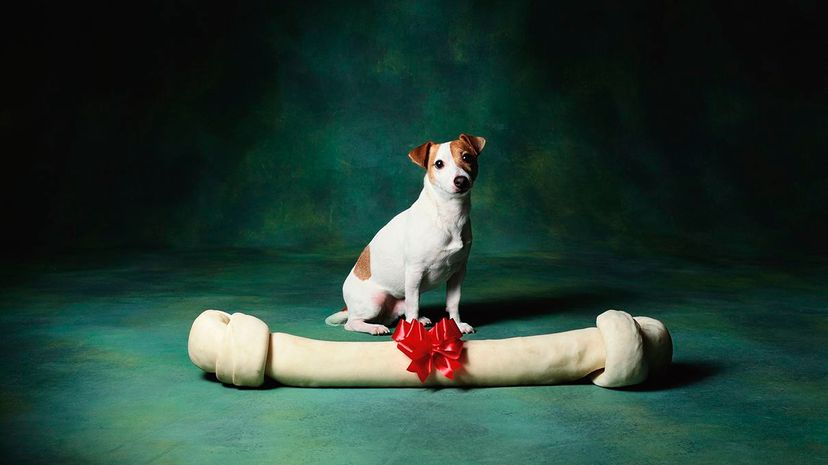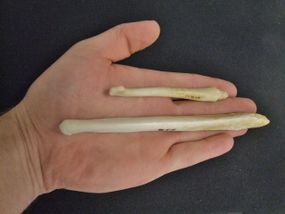
If you're reading this, you probably don't have a bone that keeps your penis constantly erect. It's called an os penis, or baculum, and when you've finished giggling, you might be interested to know that we humans are unusual in this regard. That's because most male mammals do have a baculum, including your dog and cat, almost every other primate, and even walruses, whose baculum is the largest in the world at about 2 feet (0.6 meters) long. Baculums have been called "the most diverse of all bones," as they come in a dizzying array of sizes and shapes, including tridents, spiny cudgels, and spoons.

The baculum serves the functions of generally protecting the structure of the penis while helping direct sperm to the cervix, but it's certainly not necessary (case in point: we Homo sapiens have had to muddle through somehow without one). Why some mammals were dealt a baculum and others weren't, and why they vary so widely between species, has long been the subject of scientific curiosity. A new study published in the Royal Society journal Proceedings B sheds some light on what these bones do, and why humans don't have one though all our closest relatives do.
Advertisement
For starters, the research team from the University College London Department of Anthropology tracked the origins of the penis bone back to its inception in mammals, between 145 and 95 million years ago. Strangely enough, they found that although the first mammals did not have a baculum, the first carnivores and primates did. But what evolutionary advantage could these animals have gotten from having a perpetually stiff penis, and why did we end up without one? The researchers have some ideas about that, too:
"Our findings suggest that the baculum plays an important role in supporting male reproductive strategies in species where males face high levels of postcopulatory sexual competition," said lead author Matilda Brindle in a press release. "Prolonging intromission helps a male to guard a female from mating with any competitors, increasing his chances of passing on his genetic material."
To put it another way, having a baculum extends the duration of intromission, or vaginal penetration, and in animals where this needs to go on awhile in order to prevent the females from toddling off and finding someone else to have sex with right away, the males need some strategy for keeping her engaged longer than, say, three minutes. If he can do that, his chances of passing along his genes is much higher. Hence, the bone.
In primates, there seems to be a correlation between the length of the baculum and the duration of intromission: the longer copulation takes, the longer the baculum. For instance, the little primate called an aye-aye (Daubentonia madagascariensis), found only on Madagascar, has a very long baculum in proportion to its size, and their copulation usually lasts around an hour. By contrast, a chimpanzee has a very short baculum — only about a quarter to a third of an inch (6 to 8 millimeters) long — and intromission lasts only about seven seconds. In humans, intromission usually takes about two minutes on average. (Sorry, it's just true — don't believe everything you see on the internet.)

The research team also found baculums to be most common in polygamous mammals, and those with very distinct breeding "seasons." Humans, on the other hand, tend to be monogamous, and we observe no regular breeding season (except maybe the three-day weekend), so the fact that we phased out our baculum isn't that perplexing.
"After the human lineage split from chimpanzees and bonobos and our mating system shifted towards monogamy, probably after 2 million years, the evolutionary pressures retaining the baculum likely disappeared," says Dr. Kit Opie in a press release. "This may have been the final nail in the coffin for the already diminished baculum, which was then lost in ancestral humans."
Advertisement